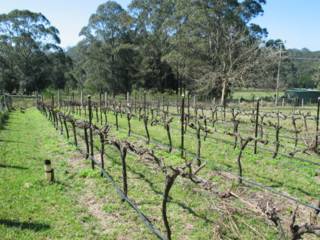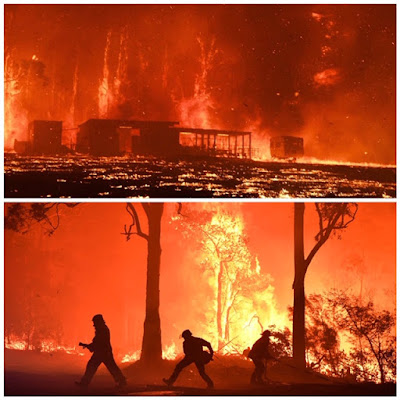The first thing I noticed as I drove south was how dry the country was.
Drought is still with us on the coast. This is the third year in a row.
The bad situation was confirmed as I drove in through the front gate of the property.
Apart from the brown grass, my top dam was bone dry and both bottom dams were less than half full.
Luckily my house tanks are almost full from the little bit of rain that has fallen in the last 3 months. My visitors did a good job of water conservation during their house sitting duties.
I have had an increase in my cattle population while I was away.
Four new calves, two bulls and two heifers.
Unfortunately one of the cows had died shortly afer giving birth. It is a bit sad as she was one of my orginal breeders but guess she was getting on and may have been in bad condition due to the poor weather conditions and a lack of good feed. This is the first fatality I have had in 12 years of breeding so guess that is not too bad a record.
Her calf is fine but has to be hand fed. Thankfully my neighbor was a dairy farmer in a past life and knew exactly how to handle the situation.
I have now taken over the feeding with 4L of warm (he doesn't like it cold) milk formula a day. He is also eating hay so is loooking quite healthy. He goes by the name of Milton.
The cows are being "dragged down" by their calves and were looking a bit poor. My neighbor had been rationing the hay due to a shortage of feed in the district generally but increasing the portion as winter went on. I ordered another 10 bales despite the high price and have decided to feed them twice a day in order to get them in better condition so they can look after their offsprings better. Hopefully with a bit of rain the pasture will start to grow again and reduce the dependance on "imported" feed. But the weather forecast is not encouraging. Dry and warm is the prognosis.
The grapevines all looked fine. Of course they have been dormant during winter.
I need to prune the Cabernet Sauvignon soon as well as replant some Semillon. I also have to plant out the Tempranillo from the seed bed. Then there is the Pinot Noir!
The weather is warm and this with bring on bud burst prematurely so need to do these tasks urgently. In fact this has been the second warmest winter on record.
So I am fighting jet lag and trying to get chores done.
Life wasn't meant to be easy!






















